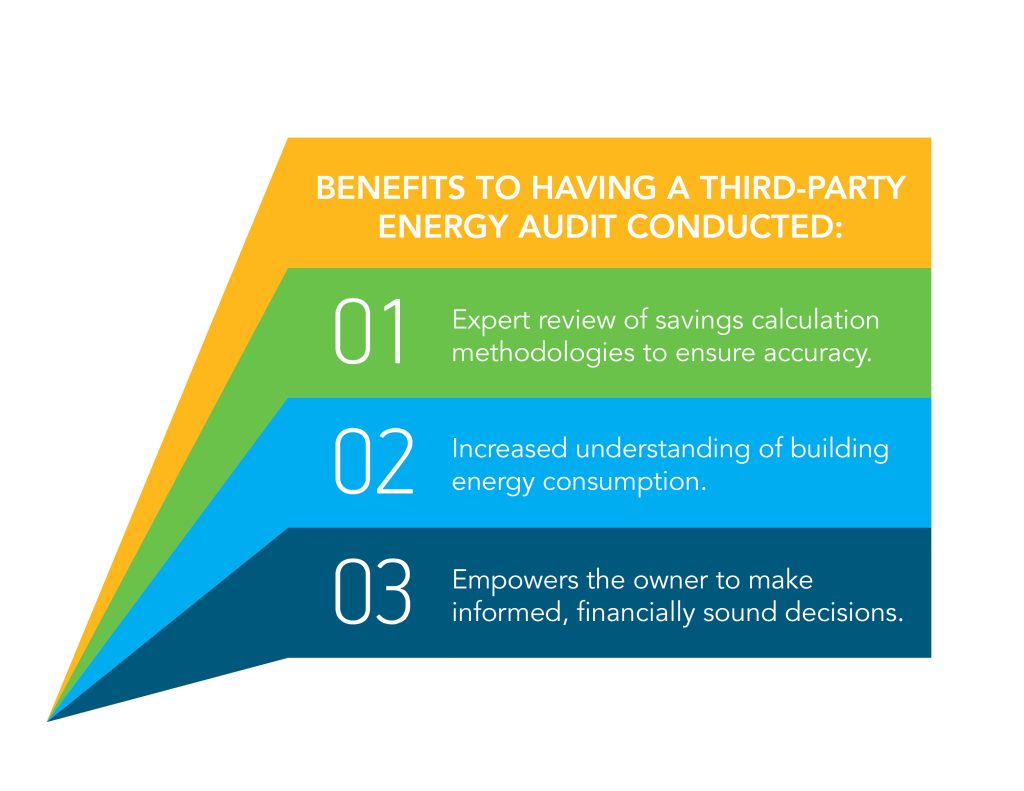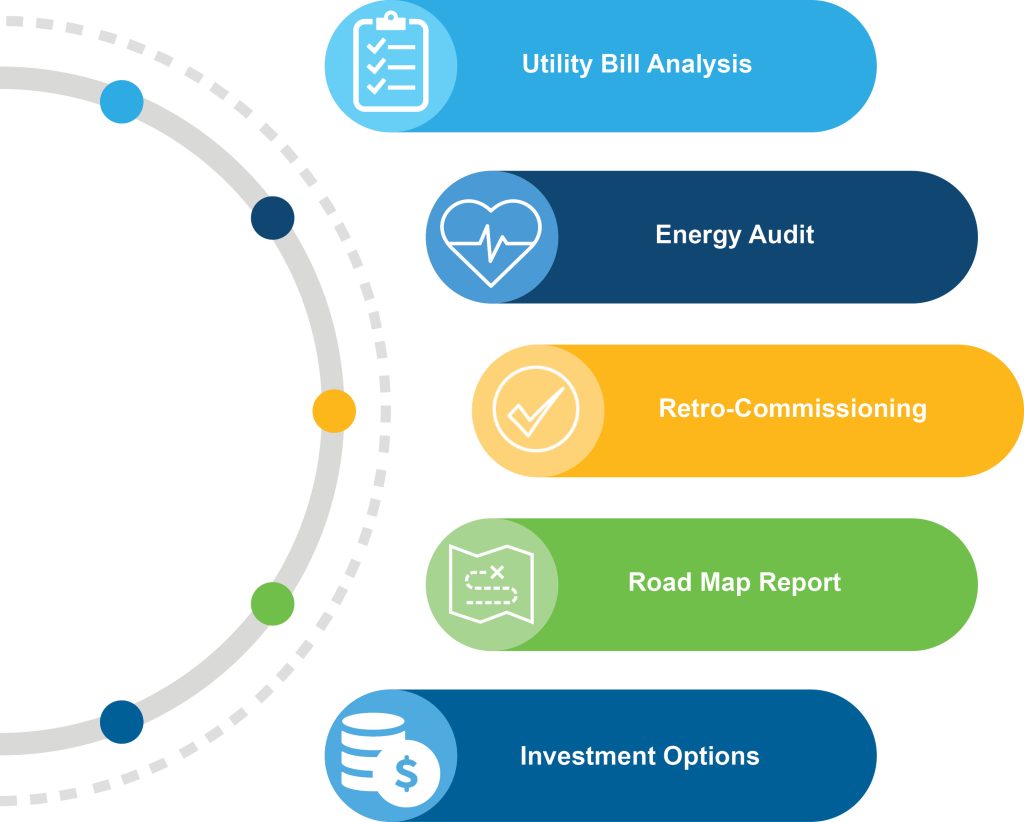When it comes to our physical health, there is almost no cost too great to make sure that we stay alive and healthy. When we don’t feel good or have symptoms of an illness, we immediately go to our doctor to be checked to make sure we catch any issues as soon as possible! However, even when we don’t have physical symptoms, there can still be underlying issues that are only found with a complete physical or checkup.
We don’t usually think about it this way, but the reality is that our buildings are also living entities requiring regular checkups. The equipment that keeps a building running has circulation systems and central systems that keep the building operational and “living” in a healthy manner. Like us, they too can get “sick” and perform poorly. Most times we know something is wrong in our building when a particular area becomes uncomfortable, or we find moisture issues. What many may not realize, is that there are even more cases of our buildings operating poorly and inefficiently without any noticeable comfort issues.
TIME FOR A CHECK-UP
An energy audit is like a medical check-up for your building. Many owners do not have personnel on staff that can conduct an assessment to this level and should seek qualified engineers who understand the complexity of buildings and systems and how they work to identify the best opportunities. Even though your doctor uses a set form to guide him through the checkup process and unless your neighbor is a doctor, you wouldn’t take that same form and ask them to do the checkup for you, would you? Why not? The primary reason is that your neighbor most likely does not know how to interpret the results of the collected information!
An energy audit is not one size fits all. Each facility can have a different scale and scope of what is necessary to perform a proper evaluation. Benefits of performing an energy audit include:
- Thorough building analysis
- Increased understanding of building energy consumption
- Identification of current system deficiencies
- Allows a plan for corrective action to be created
By performing an energy audit of a building, indicators can be identified that point to deeper issues that may not have reached the point of showing symptoms. These identified indicators can be used to create recommendations concerning the energy and water-consuming systems, including HVAC equipment, fans, pumps, lighting, plumbing fixtures, equipment, and more. These recommendations are often referred to as ECM’s or Energy Conservation Measures. The goal of an Energy Audit is to provide an owner with the information needed to make informed decisions about the future of their buildings. Maintaining a healthy building that operates efficiently can not only have a significant impact on the operating costs of a building but also maintain or increase the capital value of a property.
TLC’s experience working with ESPCs or Energy Savings Performance Contracts and experience in completing over 150 million square feet of energy audits makes us a great resource when you need third-party review of your facilities. Every energy conservation measure (ECM) is evaluated for implementation costs, operational parameters, and resulting energy consumption impact. The measurement and verification protocols are also reviewed to verify that they are fully encompassing and truly measure what is being guaranteed so that the owner is protected should the contract supplier not meet expectations. With interest rates rising and the costs of equipment continuing to increase, many of our clients are faced with the challenge of keeping their buildings healthy and efficient with dated systems.

RETRO-COMMISSIONING
The Energy Audit is the first step and is considered a preliminary high-level wellness check. These are typically not very expensive and can be found warranted by a review of the utility bills and comparing that consumption data to similar usage buildings in the area. A building indicating a high energy consumption, relative to similar buildings in the area, certainly becomes a good candidate for proceeding with the Energy Audit.
Just like your doctor when the preliminary results of your blood pressure, pulse, and blood test results indicate a need for further testing, the energy audit may also indicate the need for a deeper dive. This deeper dive is typically in the form of Retro-Commissioning. You may sometimes hear a similar term, Re-Commissioning. These are both the same process, but the term’s usage indicates whether the building was commissioned during the original construction.
Retro-commissioning is like a cardiovascular stress test that allows the energy or commissioning engineer to look below the surface and determine the reasons behind the issues identified during the energy audit. Engineers test equipment and control interfaces to make sure everything is communicating properly and functioning to best suit the building’s current use. Note that sometimes, the usage of a building is different than originally intended and the way the building is operated needs to be changed to match current usage. Many times, issues are the result of a miscommunication between the Building Automation System (BAS), sometimes referred to as an EMS Energy Management System, and the operational components in the system and can be corrected during the testing. Other times, failed components are identified and recommendations for replacement are made.

Retro-commissioning project history has shown that no facility operates perfectly and savings from performing an RCx can be significant. Lawrence Berkeley National Laboratory’s (LBNL) 2018 study found that commissioning existing buildings offered reliable cost-effective savings with a median simple payback of 2.2 years and an average energy reduction of 19%! TLC’s experience has shown that the payback number can many times be much less than even 2 years.
The results of a well-executed Retro-Commissioning can be:
- Improved building operational efficiency
- A True Documentation of building conditions and deficiencies
- Extended useful life of existing equipment
- Improved equipment response to emergency situations
- Increased overall wellness of the building environment
The report from the energy audit and retro-commissioning process can provide both low investment pathway and higher investment pathway. Low investment paths are set up to allow an owner to recognize a reasonably high return even though implemented with limited resources. More invasive paths to bring a building to optimal operating conditions sometimes may require a higher investment but the results are always worthwhile to the long-term health of your building and the protection of your capital investment.
LOW CAPITAL OPTION FOR UPGRADES
Energy savings performance contracts (ESPCs) allow a client to procure energy savings and facility improvements with little to no up-front capital costs. However, this vehicle for financing building and or campus upgrades is typically reserved for publicly held entities like Municipalities, Universities, Federal Government facilities, and Military Bases. The reason this is so is because these entities can usually handle the longer payback windows that these projects occupy. Although TLC is not an ESPC provider, there are many companies out there that do a great job developing very successful projects with TLC as a valued project development partner. By contracting through an ESPC, you are modernizing your facility and reducing your energy consumption many times with a performance guarantee! Some of the major benefits are:
- Long-term energy and utility savings
- Little to no initial capital needed for the project (no new taxes or bonds required for building system upgrades)
- New equipment that can improve building health
- Improved air quality for occupants
- Opportunity to include renewable energy sources to your facility
IT’S TIME TO START SAVING!
If it has been a while since your facility has been assessed or if you have never had your building assessed, it’s very easy to take the first step. Reach out to one of our team of energy engineering experts to see if we can help you!

